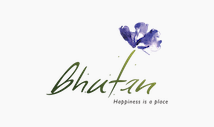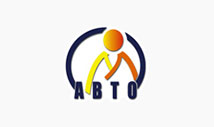People
Bhutanese people can be generally categorized into three main ethnic groups. The Tshanglas, Ngalops and the Lhotshampas.
Tshanglas: The Tshanglas or the Sharchops as they are commonly known as, are considered the aboriginal inhabitants of eastern Bhutan. According to historians, Tshanglas are the descendants of Lord Brahma and speak Tshanglakha. They are commonly inhabitants of the eastern part of the country. Weaving is a popular occupation among their women and they produce beautiful fabrics mainly of silk and raw silk.
Ngalops: The Ngalops who have settled mostly in the six regions of western Bhutan are of Tibetan origin. They speak Ngalopkha, a polished version of Dzongkha, the national language of Bhutan. Agriculture is their main livelihood. They cultivate cereals such as rice, wheat, barley and maize along with a variety of other crops. They are known for Lozeys, or ornamental speech and for Zheys, dances that are unique to the Ngalops.
Lhotshampas: The Lhotshampas have settled in the southern foothills of the country. They speak Lhotshamkha (Nepali) and practice Hinduism. Their society can be broken into various lineages such as the Bhawans, Chhetris, Rai’s, Limbus, Tamangs, Gurungs, and the Lepchas. Nowadays they are mainly employed in agriculture and cultivate cash crops like ginger, cardamom and oranges.
The other minority groups are the Bumthaps and the Khengpas of Central Bhutan, the Kurtoeps in Lhuentse, the Brokpas and the Bramis of Merak and Sakteng in eastern Bhutan, the Doyas of Samtse and finally the Monpas of Rukha villages in WangduePhodrang. Together the multiethnic Bhutanese population number just over 700,000.
Society
Bhutanese society is free of class or a caste system. Slavery was abolished by the Third King Jigme Dorji Wangchuck in the early 1950s through a royal edict. Though, a few organizations to empower women were established in the past, Bhutanese society has always maintained relative gender equality. In general our nation is an open and a good-spirited society.
Living in Bhutanese society generally means understanding some accepted norms such as Driglam Namzha, the traditional code of etiquette. Driglam Namzha teaches people a code of conduct to adhere to as members of a respectful society. Examples of Driglam Namzha include wearing a traditional scarf (kabney) when visiting a Dzong or an office, letting the elders and the monks serve themselves first during meals, offering felicitation scarves during ceremonies such as marriages and promotions and politely greeting elders or seniors.
Normally, greetings are limited to saying “Kuzuzangpo” (hello) amongst equals. For seniors and elders, the Bhutanese bow their head a bit and say “kuzuzangpo la” (a more respectful greeting). Recently, shaking hands has become an accepted norm.
The Bhutanese are a fun-loving people fond of song and dance, friendly contests of archery, stone pitching, traditional darts, basketball and football. We are a social people that enjoy weddings, religious holidays and other events as the perfect opportunities to gather with friends and family.
The openness of Bhutanese society is exemplified in the way our people often visit their friends and relatives at any hour of the day without any advance notice or appointment and still receive a warm welcome and hospitality.
Religion
The Bhutanese constitution guarantees freedom of religion and citizens and visitors are free to practice any form of worship so long as it does not impinge on the rights of others. Christianity, Hinduism and Islam are also present in the country.
Buddhism: Bhutan is a Buddhist country and people often refer to it as the last stronghold of Vajrayana Buddhism. Buddhism was first introduced by the Indian Tantric master Guru Padmasambhava in the 8th century. Until then the people practiced Bonism, a religion that worshiped all forms of nature, remnants of which are still evident in some remote villages in the country.
With the visit of Guru Padmasambhava, Buddhism began to take firm roots within the country and this especially led to the propagation of the Nyingmapa (the ancient or the older) school of Buddhism.
Phajo Drugom Zhigp from Ralung in Tibet was instrumental in introducing yet another school of Buddhism – the Drukpa Kagyu sect. In 1222 he came to Bhutan, an event of great historical significance and a major milestone for Buddhism in Bhutan, and established the DrukpaKagyu sect of Buddhism, the state religion. His sons and descendants were also instrumental in spreading it to many other regions of western Bhutan.
By far the greatest contributor was Zhabdrung Nawang Namgyal. His arrival in 1616 from Tibet was another landmark event in the history of the nation. He brought the various Buddhist schools that had developed in western Bhutan under his domain and unified the country as one whole nation-state giving it a distinct national identity.
The Buddhism practiced in the country today is a vibrant religion that permeates nearly every facet of the Bhutanese life style. It is present in the Dzongs, monasteries, stupas, prayer flags, and prayer wheels punctuate the Bhutanese landscape. The chime of ritual bells, sound of gongs, people circumambulating temples and stupas, fluttering prayer flags, red robed monks conducting rituals stand as testaments to the importance of Buddhism in Bhutanese life.
Animism: Though Bhutan is often referred to as the last Vajrayana Buddhist country, you can still come across animistic traditions and beliefs being practiced by the people.
The form of Buddhism practiced in Bhutan has absorbed many of the features of Bonism such as nature worship, worship of a host of deities, invoking and propitiating them. According to Bonism, these deities were the rightful owners of different elements of nature. Each different facet of nature was associated with its own specific type of spirit.
For example, mountain peaks were considered as the abodes of guardian deities (Yullha), lakes were inhabited by lake deities (Tshomem), cliff deities (Tsen) resided within cliff faces, the land belonged to subterranean deities (Lue and Sabdag), water sources were inhabited by water deities (Chu giLhamu), and dark places were haunted by the demons (due).
Every village has a local priest or a shaman to preside over the rituals. Some of the common forms of nature worship being practiced are the Cha festival in Kurtoe, the Kharphud in Mongar and Zhemgang, the BalaBongko in WangduePhodrang, the Lombas of the Haaps and the Parops, the JomoSolkha of the Brokpas, the Kharam amongst the Tshanglas and the Devi Puja amongst our southern community.
These shamanistic rituals are performed for various reasons ranging from to keep evil spirits at bay, bring in prosperity, to cure a patient or to welcome a new year.





